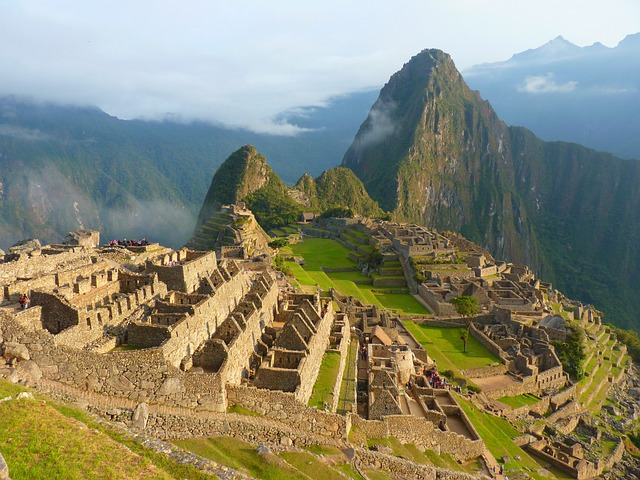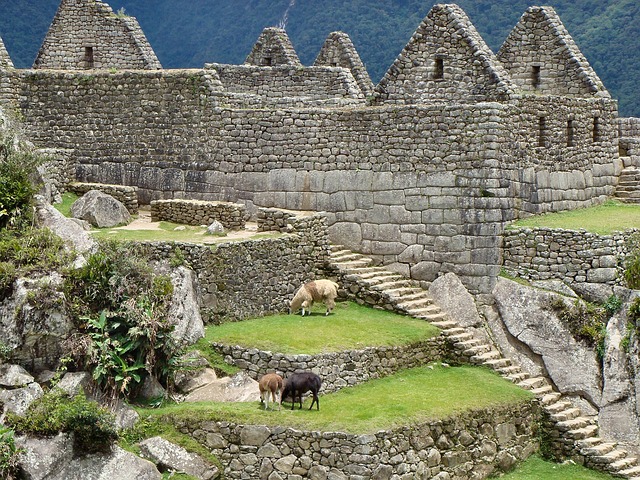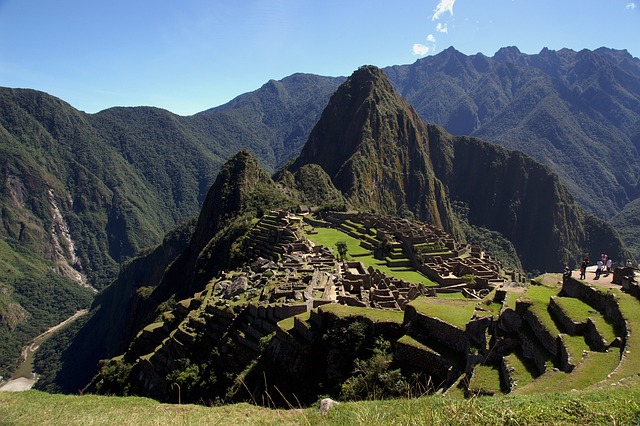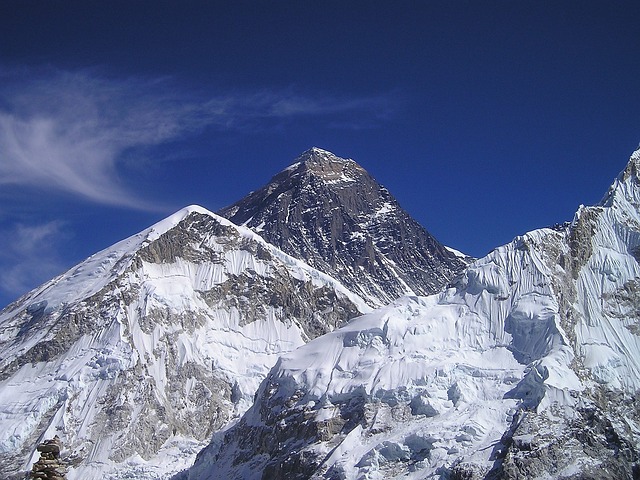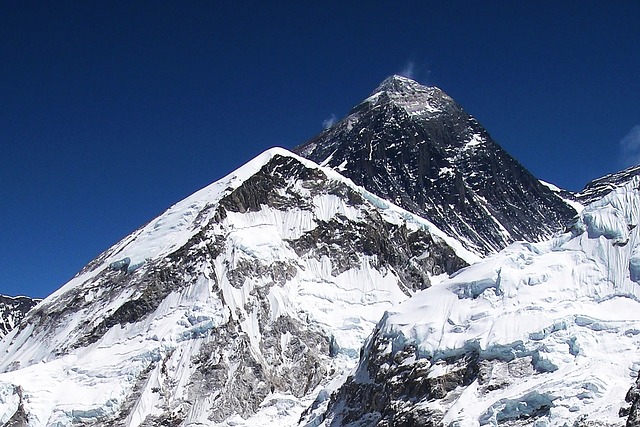The Taj Mahal has captured the hearts and minds of people around the world with its awe-inspiring beauty and rich history. This iconic landmark in India is more than just a mausoleum, it is a symbol of love, spirituality, and cultural heritage. As one of the Seven Wonders of the World, it holds a special place in the hearts of both locals and tourists alike.
In this article, we aim to provide you with important information about the Taj Mahal, from its construction to its symbolism and practical tips for visiting. By understanding the history and cultural significance of this monument, you can truly appreciate its grandeur and impact on Indian culture.
Whether you're planning a trip to India or simply interested in learning more about this iconic landmark, join us on a journey through the Taj Mahal and discover the wonders it has to offer.
History and Construction of the Taj Mahal
The Taj Mahal is a magnificent mausoleum located in Agra, India. It is a symbol of eternal love and one of the most iconic landmarks in the world. Built by Mughal emperor Shah Jahan in memory of his beloved wife Mumtaz Mahal, the Taj Mahal is a testament to their enduring love and devotion. In this section, we will explore the history and construction of this grand monument, and discover the fascinating story behind its creation.
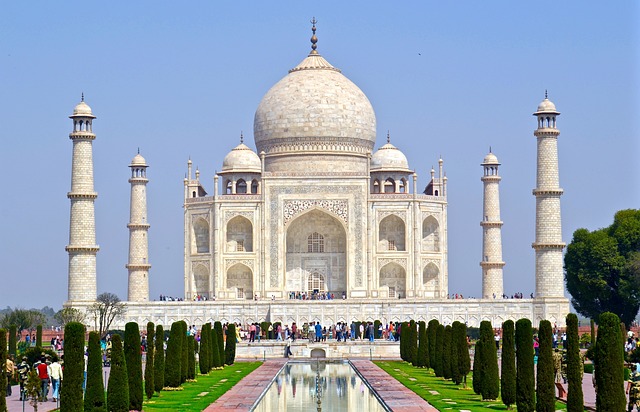
The inspiration behind the Taj Mahal dates back to the 17th century, when Shah Jahan fell deeply in love with Mumtaz Mahal. After her death in 1631, he was grief-stricken and vowed to build a mausoleum that would be a fitting tribute to their love. Construction of the Taj Mahal began in 1632 and took over 20 years to complete, with the help of thousands of skilled artisans and workers.
The Taj Mahal is a remarkable example of Mughal architecture, blending elements of Persian, Indian, and Islamic styles. Its main dome is a perfect representation of the onion-shaped domes commonly found in Persian architecture. The intricate marble work and delicate inlay designs are reminiscent of the intricate details found in Indian architecture. And the use of calligraphy and geometric patterns on the walls and ceilings showcases the influence of Islamic art.
The construction of the Taj Mahal involved the use of various materials, including white marble, red sandstone, and precious stones such as jade, crystal, and turquoise. The marble used in the construction was brought from various parts of India, as well as Afghanistan, and was transported over 200 miles to Agra. It is said that over 1,000 elephants were used to transport the materials to the construction site.
The Taj Mahal is not just a beautiful structure, but it also holds deep symbolism and meaning. The pure white marble used in its construction symbolizes purity and innocence, while the minarets represent the four corners of the earth. The intricate gardens surrounding the mausoleum symbolize paradise. It is believed that Shah Jahan chose this location for its serene and peaceful atmosphere, as it was the perfect setting for his eternal love to rest.
The love story behind the Taj Mahal has become legendary, and it is a significant part of Mughal history. It is said that Shah Jahan was so heartbroken after Mumtaz Mahal's death that he wore black for the rest of his life. And when he passed away, his body was buried next to his beloved wife, making the Taj Mahal their eternal resting place.
The Taj Mahal is not just a monument, but it holds spiritual and cultural significance for the people of India. It is a symbol of love, beauty, and devotion, and its enduring legacy continues to inspire people from all over the world. The next time you visit the Taj Mahal, take a moment to appreciate the history and craftsmanship behind this magnificent wonder of the world.
Symbolism and Meaning of the Taj Mahal
The Taj Mahal is not just a magnificent architectural wonder, but also a symbol of love, beauty, and spirituality. Every aspect of this iconic monument holds deep symbolism and meaning, making it a must-visit for tourists and a source of pride for Indians. In this section, we will explore the various elements of the Taj Mahal and their significance.
White Marble:
The Taj Mahal is entirely made of white marble, which symbolizes purity and eternity. This beautiful and delicate material was chosen as a tribute to Shah Jahan's beloved wife, Mumtaz Mahal, whom the monument was built for. The pure white exterior of the Taj Mahal also reflects light, giving it a mesmerizing glow, and representing the eternal love that Shah Jahan had for his wife.
Minarets:
The four minarets, which stand tall at the corners of the Taj Mahal, represent the four corners of the world. They also have a practical purpose, as they were built to provide support and balance to the main dome. However, they also hold a deeper meaning, symbolizing the spread of Islam throughout the world, as the Taj Mahal was built as a mausoleum for a Muslim queen.
Gardens:
The gardens of the Taj Mahal are known as the Charbagh, which translates to “four gardens.” These gardens are strategically designed with fountains, pathways, and trees, symbolizing paradise in Islamic culture. The four parts of the garden also represent the four rivers of paradise, as described in the Quran. The gardens also serve as a symbol of the Mughal's love for nature and their expertise in landscaping.
Love Story of Shah Jahan and Mumtaz Mahal:
The Taj Mahal is not just a testament of love for Mumtaz Mahal, but also for Shah Jahan's love for his wife. The love story behind the Taj Mahal is well-known; Mumtaz Mahal passed away while giving birth to her 14th child, and a heartbroken Shah Jahan built the Taj Mahal as a tribute to her. This love story adds a romantic and emotional dimension to the monument, making it even more special for visitors.
Spiritual and Cultural Significance:
The Taj Mahal holds great spiritual and cultural significance for the people of India. In Islam, paradise is described as a garden, and the Taj Mahal, with its gardens and symbolic elements, is believed to be a representation of that. It is also seen as a symbol of the Mughal's tolerance and acceptance of different cultures and religions.
In Indian culture, the Taj Mahal is considered a symbol of beauty and perfection. It has inspired countless poets, artists, and writers, and has become a source of national pride. The intricate carvings and delicate designs of the Taj Mahal are a testament to the skilled craftsmanship of the Mughals and their love for beauty and symmetry.
Overall, the symbolism and meaning behind the Taj Mahal make it more than just a beautiful monument. It is a reflection of the rich culture and history of India, and a reminder of the enduring power of love. Visiting the Taj Mahal is not just a sightseeing experience, but also an opportunity to delve into the deeper meanings and appreciate the beauty and significance of this iconic landmark.
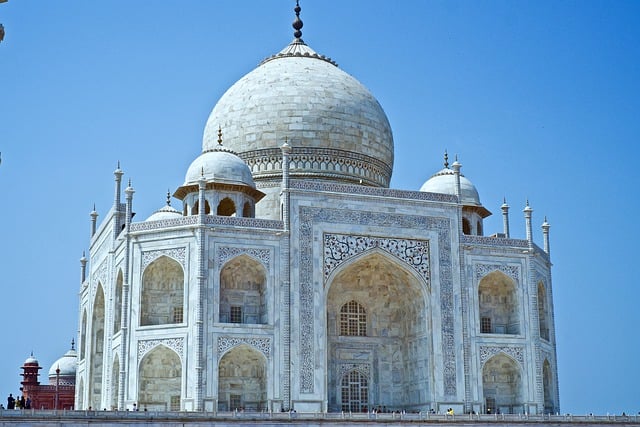
Visiting the Taj Mahal: Practical Information
Visiting the Taj Mahal is a must for anyone traveling to India. This iconic landmark is not only a UNESCO World Heritage Site, but it is also a symbol of eternal love and beauty. Before embarking on your journey to the Taj Mahal, it is important to have some practical information in hand to make the most out of your visit. In this section, we will provide you with important details that will help you plan your trip to the Taj Mahal.
Opening Hours and Ticket Prices:
The Taj Mahal is open from sunrise to sunset, every day except for Friday. The best time to visit is during sunrise or sunset when the monument is bathed in a beautiful golden light. The entry fee for Indian nationals is 50 rupees, while for foreign nationals it is 1300 rupees. You can also purchase a combined ticket for the Taj Mahal and Agra Fort for 2500 rupees.
How to Get There:
The Taj Mahal is located in the city of Agra, which is well connected by air, rail, and road. The nearest airport is the Indira Gandhi International Airport in Delhi, which is about a four-hour drive away. Agra also has a major railway station with trains connecting to major cities in India. You can also hire a taxi or take a bus to Agra from major cities like Delhi, Jaipur, or Varanasi.
Dress Code and Etiquette:
As the Taj Mahal is a place of worship, visitors are expected to dress modestly and respectfully. Both men and women are required to cover their heads and remove their shoes before entering the monument. It is also recommended to wear clothes that cover your shoulders and knees. If you are not dressed appropriately, you can rent a scarf or cover-up at the entrance.
Photography and Restrictions:
Photography is allowed inside the Taj Mahal, but there are certain restrictions in place. Tripods, selfie sticks, and drones are not allowed inside the monument. Visitors are also not allowed to touch or climb on any part of the monument. For those looking to take the perfect shot, the best spots for photography are from the Diana Bench or the top of the main gate.
Must-See Sights:
The main attraction at the Taj Mahal is, of course, the main mausoleum. This magnificent structure is where the white marble tomb of Mumtaz Mahal and Shah Jahan are located. The intricate marble inlay work and calligraphy inside the mausoleum are a must-see. The beautiful gardens surrounding the monument are also a sight to behold. The symmetry and balance in the design of the gardens are truly remarkable. Another sight not to be missed is the mosque, located on the western side of the Taj Mahal. This red sandstone structure adds to the grandeur of the monument.
Exploring the Surrounding Area:
While the Taj Mahal is the main attraction, there are other sights to see in the surrounding area. The Agra Fort, located just 2.5 kilometers away, is a UNESCO World Heritage Site and a must-visit. It is a red sandstone fort that served as a residence for Mughal emperors. Another place worth visiting is the Mehtab Bagh, which offers a stunning view of the Taj Mahal from across the river. You can also explore the bustling city of Agra, known for its markets, street food, and Mughal architecture.
Tips for a Memorable Experience:
To make the most out of your Taj Mahal experience, it is recommended to visit during the off-season or during weekdays to avoid the crowds. It is also advisable to hire a guide to learn about the history and significance of the monument. If you are an early riser, a sunrise tour of the Taj Mahal is highly recommended. And most importantly, take the time to appreciate the beauty and symbolism behind this iconic landmark.
In conclusion, a visit to the Taj Mahal is a journey through India's rich history and culture. From its stunning architecture to its deep symbolism, this monument is truly a marvel to behold. By keeping these practical tips in mind, you can make the most out of your trip to the Taj Mahal and create unforgettable memories. So pack your bags, and get ready to explore this iconic landmark like never before.
Must-See Sights at the Taj Mahal
The Taj Mahal is a marvel of architectural genius and a testament to the enduring power of love. As you wander through the complex, you will come across several must-see sights that showcase the grandeur and beauty of this iconic landmark. From the main mausoleum to the intricate gardens, each sight has a unique story to tell. Here are some of the top sights that you should not miss during your visit to the Taj Mahal.
1. The Main Mausoleum:
The main mausoleum is the centerpiece of the Taj Mahal complex and is where the remains of Emperor Shah Jahan and his beloved wife, Mumtaz Mahal, lie in eternal rest. The mausoleum is a symmetrical masterpiece, with its iconic dome and intricate marble carvings. As you enter the mausoleum, you will be struck by the sense of serenity and beauty that surrounds you. The interior of the mausoleum is adorned with precious stones and intricate calligraphy, making it a sight to behold.
2. The Gardens:
The gardens of the Taj Mahal are an essential part of its overall design and are known for their impeccable symmetry and beauty. The gardens are divided into four parts, with water channels and pathways creating perfect reflections and leading the eye towards the main mausoleum. As you stroll through the gardens, take a moment to appreciate the intricate details of the fountains, trees, and flower beds. The gardens are also a popular spot for photography, with endless opportunities for capturing beautiful moments.
3. The Mosque:
To the west of the main mausoleum is the stunning mosque, which is an important part of the Taj Mahal complex. The mosque's design is a perfect mirror image of the main mausoleum, symbolizing balance and harmony. The mosque's intricate details and stunning marble carvings make it a must-see sight for visitors. Take a moment to explore the interior of the mosque and admire its beauty and spiritual significance.
4. The Yamuna River:
The Taj Mahal is located on the banks of the Yamuna River, which adds to its picturesque setting. The river offers a stunning backdrop to the monument, and you can take a boat ride to get a different perspective of the Taj Mahal. The river also plays an essential role in the monument's history, as it was used to transport the materials needed for its construction.
5. The Calligraphy:
The Taj Mahal is adorned with intricate calligraphy throughout its complex. The calligraphy is not just decorative but also carries significant historical and religious importance. The Arabic verses and passages from the Quran are inscribed on the walls, adding to the monument's spiritual and cultural significance.
6. The Inlay work:
Another must-see sight at the Taj Mahal is the intricate inlay work that adorns the monument's exterior. The skilled artisans used precious stones and marble to create beautiful floral and geometric patterns. The intricate details and precision of the inlay work are a testament to the Mughal's love for beauty and their mastery of art and architecture.
As you explore these must-see sights at the Taj Mahal, take your time to appreciate the beauty and the history behind each one. Don't forget to capture these moments through photographs and immerse yourself in the grandeur of this iconic landmark. The sights at the Taj Mahal will leave a lasting impression and add to the unforgettable experience of visiting this magnificent monument.
Exploring the Surrounding Area
The Taj Mahal complex is not just limited to the iconic mausoleum itself. In fact, there are many other fascinating attractions in the surrounding area that are worth exploring. From historical sites to local markets, Agra has a lot to offer beyond the Taj Mahal. Here are some must-see sights and activities to add to your itinerary when visiting the Taj Mahal.
1. Agra Fort:
Located just 2.5 kilometers from the Taj Mahal, Agra Fort is a UNESCO World Heritage Site and a must-visit for history buffs. The fort was built by the Mughal Emperor Akbar in the 16th century and served as the main residence of the Mughal dynasty until the capital was shifted to Delhi. The fort is known for its impressive architecture, with a blend of Indian and Persian styles. Make sure to check out the Diwan-i-Am (Hall of Public Audience), Diwan-i-Khas (Hall of Private Audience), and the stunning Jahangir Palace.
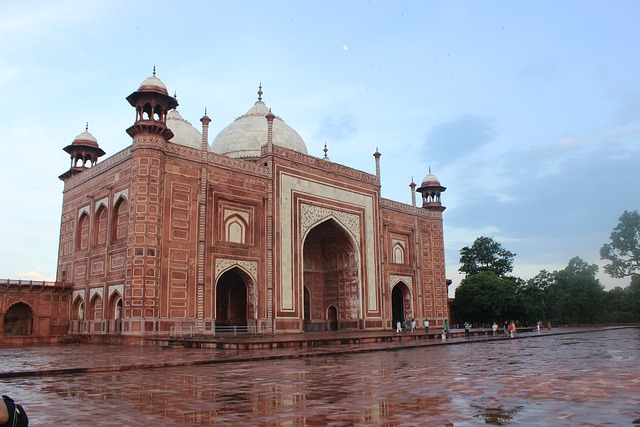
2. Mehtab Bagh:
For a different perspective and breathtaking views of the Taj Mahal, head to Mehtab Bagh, also known as the Moonlight Garden. Located across the Yamuna River from the Taj Mahal, this garden was built by Emperor Babur and was originally designed to be the perfect viewing spot for the Taj Mahal. Today, it offers a serene and peaceful atmosphere, making it the perfect place to escape the crowds and enjoy the beauty of the Taj Mahal from a distance.
3. Kinari Bazaar:
No trip to India is complete without experiencing the hustle and bustle of a local market. Kinari Bazaar, located near the Agra Fort, is a popular spot for shopping in Agra. Here, you can find a variety of traditional Indian clothes, jewelry, handicrafts, and souvenirs. Bargain hunters will have a field day here, as prices are negotiable and you can find some great deals.
4. Agra Cuisine:
While exploring the Taj Mahal and its surrounding area, don't forget to indulge in some of the local cuisine. Agra is known for its Mughlai cuisine, which is a fusion of Persian, Indian, and Central Asian flavors. Don't miss out on trying the famous Agra ka Petha (a sweet made from pumpkin), Mughlai biryani, and the local street food. You can find some great food options near the Taj Mahal complex and in the markets around the area.
5. Agra City Tour:
If you have some extra time, consider taking a day tour of Agra city to explore its rich cultural and historical heritage. You can visit the Tomb of Itimad-ud-Daulah (also known as the Baby Taj), which is often referred to as the inspiration for the Taj Mahal. You can also visit the Ram Bagh Gardens, believed to be the oldest Mughal garden in India, and the Jama Masjid, one of the largest mosques in India.
In conclusion, the Taj Mahal is undoubtedly the main attraction in Agra, but the surrounding area has a lot to offer as well. From exploring historical sites to indulging in local cuisine, there is something for everyone. So, make sure to take some time and explore the area around the Taj Mahal for a well-rounded and unforgettable experience.
Tips for a Memorable Taj Mahal Experience
To make the most out of your visit to the Taj Mahal, here are some practical tips to keep in mind:
1. Best Time to Visit: To avoid large crowds and the scorching heat, it is best to visit the Taj Mahal either early in the morning or late in the afternoon.
2. Photography Tips: The best spots for taking photos of the Taj Mahal are from the main entrance and the Princess Diana bench. Remember to be respectful and avoid taking selfies on the main platform.
3. Guided Tours: Hiring a guide can enhance your experience by providing you with interesting facts and stories about the Taj Mahal. Sunrise and night tours are also available for a unique perspective.
4. Dress Code: As a symbol of respect, visitors are required to dress modestly with covered shoulders and knees. Wearing shoes or sandals is recommended as the marble floors can get hot.
5. Cultural Understanding: Take the time to learn about the history and cultural significance of the Taj Mahal. This will deepen your appreciation for this iconic landmark.
Follow these tips for a memorable and enriching experience at the Taj Mahal. Don't forget to soak in the beauty and grandeur of this magnificent monument, and capture memories that will last a lifetime.

